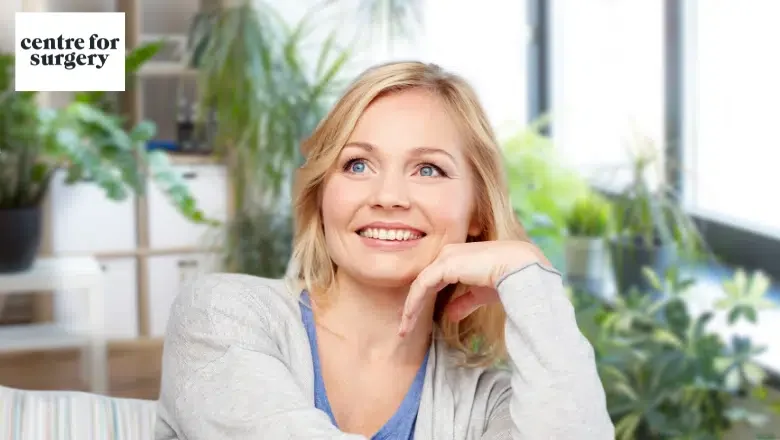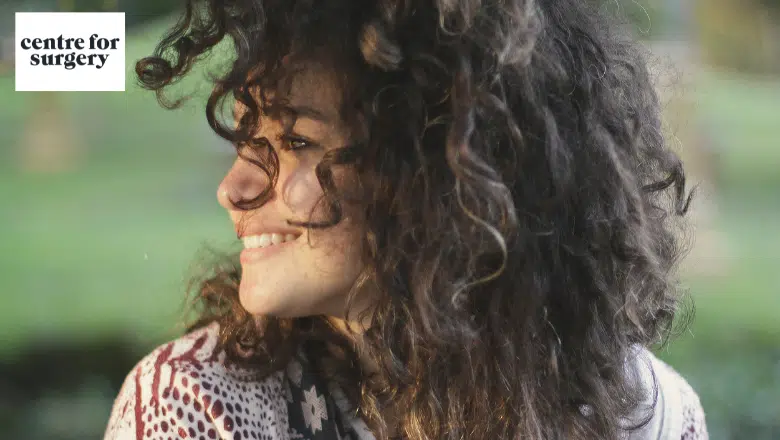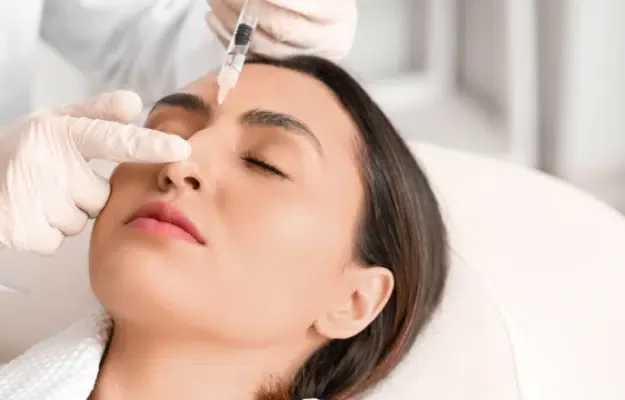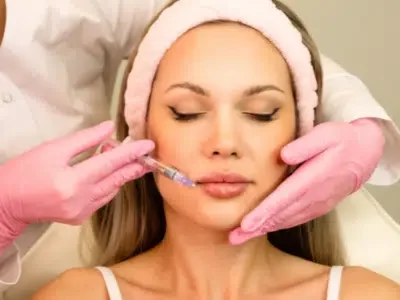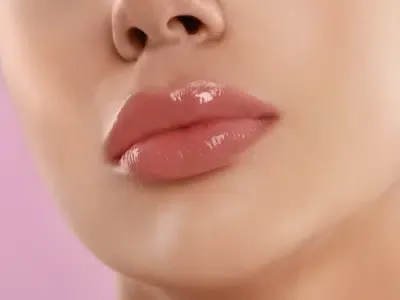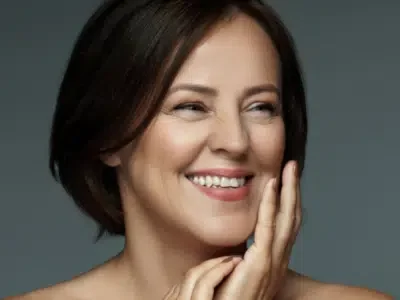Non-Surgical Thread Lift in London
A thread lift is a popular treatment for facial rejuvenation. If you have not achieved the results you have hoped for with thread lifting but are not quite ready for a facelift, thread lifting could be the ideal treatment for you. PDO threads and Silhouette Soft threads are alternative treatments which sit between non-surgical cosmetic injections and facial rejuvenation surgery. Although thread lifts have been available for several years, there have been recent advances in thread lift technology, with absorbable rapidly dissolving threads for patients who are not yet ready for facelift surgery. Several options exist for thread lifting, including PDO threads and Silhouette Soft thread lifts.
What is thread lift?
A thread lift is a cosmetic procedure that is designed to lift and tighten sagging skin on the face and neck. It involves using small, biodegradable threads that are inserted under the skin to create a lifting effect. The threads are made from materials such as polydioxanone (PDO) or polylactic acid (PLA), which are absorbable and safe for use in the body.
During the procedure, the threads are inserted using a small needle or cannula into the subcutaneous tissue. Once in place, the threads are gently pulled to lift the skin and create a more youthful appearance. The threads also stimulate collagen production, which helps to improve skin texture and elasticity.
Thread lifts can treat various areas on the face and neck, including the cheeks, jawline, neck, and eyebrows. The procedure is minimally invasive and can be performed under local anaesthesia. The results of a thread lift are generally noticeable immediately and can last for several months to a year, depending on the type of threads used and individual factors such as skin type and lifestyle.
Thread lift before and after results
The results of a thread lift can vary depending on a variety of factors, including the individual’s skin type and quality, the degree of skin laxity, the type and amount of threads used, and the areas of the face or neck treated. However, thread lifts can generally provide a subtle and natural-looking lift to sagging skin and help improve skin texture and tone.
One of the main benefits of a thread lift is that the results are noticeable immediately after the procedure. As the threads are inserted under the skin, they lift and tighten the skin, creating a more youthful and refreshed appearance. Over time, the threads stimulate collagen production in the skin, which can help to improve skin texture and elasticity.
The results of a thread lift typically last for several months to a year, depending on the type of threads used and individual factors such as skin type and lifestyle. While the results are not permanent, they can be long-lasting and provide a non-surgical alternative to traditional facelifts.
Thread lifts provide a more subtle and natural-looking lift, which may not be sufficient for individuals with significant skin laxity or excess skin. In some cases, a combination of a thread lift and other non-surgical treatments, such as dermal fillers or anti-wrinkle injections, may be recommended to achieve more comprehensive results.
Like any medical procedure, there are risks involved with a thread lift, including infection, bruising, and thread breakage. However, when performed by a qualified and experienced practitioner at Centre for Surgery, the risk of complications is low.
Benefits of Thread lifts
In recent years, the thread lift has emerged as a favoured choice for those seeking a fresher, more youthful appearance without undergoing the knife. This technique has been celebrated for its minimal invasiveness and the natural yet noticeable enhancement it brings to one’s appearance. Let’s delve into what makes thread lift an appealing option:
Thread lift stands out primarily because it sidesteps the complexities of surgery. Being minimally invasive, it eschews the need for general anaesthesia and extended hospital stays. Remarkably, patients often find themselves resuming their day-to-day lives shortly after their session, a testament to the procedure’s simplicity.
One of the most cherished outcomes of a thread lift is its ability to rejuvenate the skin while retaining the essence of one’s natural beauty. The technique meticulously lifts the skin, achieving a refined appearance without veering into the overtly dramatic. While the transformation won’t mirror the extensive change of a surgical facelift, it significantly enhances one’s visage by addressing sagging skin with finesse.
The materials employed in thread lifts, such as polydioxanone (PDO) or polylactic acid (PLA), play a dual role. They support the lifting process and invigorate the skin’s collagen production. This dual action improves skin texture and elasticity, contributing to a more vibrant complexion over time.
Versatility is another hallmark of the thread lift, making it suitable for various facial and neck regions, including the cheeks, jawline, and eyebrows. This adaptability allows for a customised approach to rejuvenation, further enhanced when combined with complementary treatments like dermal fillers.
The convenience of a thread lift is undeniable. Typically completed within 30 to 60 minutes at a clinic, it’s a testament to how advancements in cosmetic procedures have prioritised the client’s time and comfort. Despite its brevity, the effects of a thread lift are enduring, offering several months to a year of revitalised skin, with the exact duration influenced by factors unique to each individual.
The recovery process is also remarkably straightforward. Most individuals encounter minimal swelling or bruising, enabling a swift return to professional and social engagements. This aspect is particularly appealing to young adults who value efficiency and minimal disruption to their busy schedules.
What is the best age to get a thread lift?
The best age to get a thread lift varies depending on the individual and their unique skin concerns. Generally, thread lifts are best suited for individuals in their late 30s to early 50s who have mild to moderate skin laxity.
Younger patients tend to have better skin quality and elasticity, making them good candidates for non-surgical procedures like thread lifts. As we age, our skin loses elasticity and collagen, contributing to sagging and wrinkles. This means that older patients with more significant skin laxity may be better suited for surgical facelifts.
Comparing PDO and Silhouette Soft Thread Lifts: Which One Suits You Best?
Here’s a closer look at what each procedure entails, helping you decide which might be the right fit for your aesthetic goals.
PDO Thread Lifts: Affordable and Efficient
Advantages:
- Material Safety: PDO threads are crafted from a material well-regarded for its safety and compatibility with the body, a factor that has seen its widespread use in various medical applications.
- Cost-Effectiveness: Generally, PDO thread lifts are more pocket-friendly compared to their Silhouette Soft counterparts, making them accessible to a broader audience.
- Quick Procedure: The process is noted for its efficiency, requiring a relatively brief period to perform, which means less disruption to daily activities.
- Collagen Stimulation: Beyond lifting, PDO threads actively promote collagen production, contributing to an improvement in skin texture and tone over time.
Limitations:
- Duration: The effects of PDO thread lifts are somewhat ephemeral, lasting between 6 to 9 months due to the body’s natural absorption of the threads.
- Comfort: The insertion of PDO threads, while minimally invasive, can cause discomfort due to the use of needles or cannulas.
- Lifting Capability: For those with more pronounced skin laxity, PDO thread lifts may not offer the robust lift desired.
Silhouette Soft Thread Lifts: Secure and Long-lasting
Advantages:
- Secure Lifting: Thanks to their anchoring to deeper facial tissues, Silhouette Soft threads provide a more substantial and enduring lift than PDO thread lifts.
- Longevity: With results that can persist for up to 18 months, Silhouette Soft lifts offer a longer-lasting rejuvenation compared to PDO alternatives.
- Efficient Procedure: Similar to PDO lifts, the Silhouette Soft procedure is quick and minimally invasive, fitting conveniently into a busy schedule.
- Enhanced Skin Quality: These threads also stimulate collagen production, aiding in the ongoing improvement of skin texture and tone.
Limitations:
- Cost: Silhouette Soft thread lifts come at a higher price point, which might be a consideration for those with a strict budget.
- Comfort: The insertion process involves needles, which can be a source of discomfort for some patients.
- Potential for Irregularities: On rare occasions, Silhouette Soft threads may lead to skin bunching or irregularities, though such instances are infrequent.
Identifying the Ideal Candidate for a Thread Lift: Are You Suitable?
Thread lifts have gained popularity as a minimally invasive alternative for enhancing the appearance of the face and neck by addressing sagging skin. This procedure offers a quicker recovery time compared to traditional facelifts and can yield natural-looking results. However, not everyone is an ideal candidate for this treatment. Understanding whether you fit the profile for this cosmetic procedure can help you set realistic expectations and achieve the best possible outcomes. Here’s a breakdown of the key characteristics that define the ideal candidate for a thread lift.
Mild to Moderate Sagging Skin
Thread lifts excel in treating mild to moderate sagging. This procedure can effectively reposition and tighten the skin, but its capabilities are limited when it comes to more severe cases of sagging or excess skin. Individuals with significant skin laxity may find surgical facelifts to be more aligned with their needs.
High-Quality Skin
The success of a thread lift partially relies on the skin’s ability to produce collagen in response to the procedure. Those with healthy, robust skin are likely to see more pronounced improvements. On the other hand, if your skin is thin, heavily damaged, or prone to keloid scarring, alternative treatments might be more suitable.
Overall Health and Wellness
A good candidate is generally healthy and free from chronic conditions that could complicate the procedure or recovery. It’s crucial to disclose your medical history to your practitioner to assess your suitability for a thread lift.
Realistic Outcome Expectations
Understanding the limitations and possibilities of a thread lift is essential. While it offers a subtle lift and rejuvenation, it doesn’t achieve the dramatic transformations possible with surgical options. Setting realistic goals is key to satisfaction with the procedure.
Commitment to Skincare
Pre- and post-treatment skincare plays a vital role in enhancing and maintaining the results of a thread lift. A commitment to protecting your skin from sun damage, refraining from smoking, moderating alcohol consumption, and using products that support collagen production will contribute significantly to the longevity and effectiveness of the treatment.
Adherence to Post-Treatment Guidelines
The importance of following your practitioner’s post-treatment instructions cannot be overstated. These guidelines are designed to maximise the procedure’s benefits and minimise the risk of complications. Your willingness and ability to adhere to these instructions are crucial for a successful thread lift experience.
Thread lift aftercare
After undergoing a thread lift, it’s crucial to follow a proper aftercare regimen to ensure the best possible results and a smooth recovery. Here’s a detailed guide on how to care for your skin post-procedure.
Firstly, it’s vital to keep the treated area untouched and free from any rubbing for at least 48 hours post-procedure. This precaution helps prevent infection and keeps the threads securely in place. Any contact could displace the threads and compromise the lift effect.
Applying ice packs to the affected area can significantly alleviate swelling and bruising. It’s effective to apply ice intermittently—around 10-15 minutes per session—several times throughout the day, particularly during the initial few days following the procedure.
Pain or discomfort might be noticeable after the procedure. Typically, your physician might suggest over-the-counter pain relievers such as paracetamol or ibuprofen to manage any discomfort. Make sure to follow the dosage as recommended to avoid any complications.
Engaging in heavy physical activities or exercises should be avoided for at least one week after your thread lift. Strenuous movements can lead to increased swelling or may disrupt the placement of the threads, affecting the healing process.
For the nights following your procedure, consider sleeping with your head elevated—using two or three pillows or even resting in a recliner. This position helps in reducing swelling and supports quicker healing.
Choosing the right skincare products is crucial during the recovery phase. Opt for gentle, non-abrasive products that do not contain harsh chemicals or exfoliants. These products should soothe and hydrate the skin without causing irritation.
Avoiding direct sunlight and heat exposure is essential for at least a week post-procedure. Sun exposure can impair the healing process and potentially lead to complications. Therefore, refrain from activities like sunbathing, visiting tanning beds, or spending time in saunas and hot tubs.
Following up with your doctor is also crucial. This check-up allows your doctor to assess whether the threads are properly placed and the healing process is on track. Your doctor might also schedule further treatments or follow-up appointments to ensure your results are progressing as expected.
Risks and complications of a thread lift
However, like any medical intervention, they come with inherent risks and potential complications. It is crucial for anyone considering this treatment to be well-informed about these risks to make an educated decision.
Infection is a concern with any procedure involving the insertion of foreign materials into the body. The risk can be minimised by selecting a qualified and experienced practitioner who follows stringent sterility protocols. Additionally, adhering to proper aftercare instructions is essential to reduce the risk of infection.
Bruising and swelling are common side effects following a thread lift. Typically, these symptoms are mild and resolve independently within a week. The extent of bruising and swelling can vary depending on individual sensitivity and the specific technique used.
Thread breakage is a less common complication. Although rare, if the threads break, further intervention may be necessary to remove or replace them, which could complicate the recovery process.
Uneven or unsatisfactory results can occur, especially if the threads are not placed accurately or if there’s a disparity between a patient’s expectations and the achievable outcomes. It’s important for patients to have a thorough consultation with their surgeon to align expectations with what is realistically possible.
Nerve damage might happen when threads are inserted into areas close to nerves, particularly in the face or neck. This could lead to numbness, tingling, or other sensory alterations in the treated area. Such complications are rare but should be considered when opting for a thread lift near sensitive nerve zones.
Migration or extrusion of threads can also occur, where the threads may move from their original position or protrude through the skin, necessitating additional corrective procedures.
An allergic reaction to the materials used in the threads, though uncommon, is possible. Symptoms could include redness, swelling, or other allergic responses, which should be promptly addressed by medical professionals.
How much does a thread lift cost in London?
The cost of a thread lift in London can vary depending on a variety of factors, including the location and reputation of the clinic, the experience and qualifications of the practitioner, the type and amount of threads used, and the areas of the face or neck treated. In general, the cost of a thread lift in London can range from around £1500 to £4000 or more.
The cost of a thread lift typically includes the initial consultation, the procedure itself, and any necessary follow-up appointments. However, it is important to confirm what is included in the cost by speaking to one of our patient coordinators.
Thread Lifts at Centre for Surgery
Centre for Surgery is considered the leading plastic and cosmetic surgery clinic in London and is home to some of the best plastic and reconstructive surgeons in the UK. We have extensive experience in facial rejuvenation treatments and offer minimally invasive thread-lifting treatments for patients who are not yet ready for a facelift. Call us today on 0207 993 4849 or complete the contact form below to schedule an in-person consultation at our state-of-the-art Baker Street clinic in London.
FAQs
-
What is a silhouette thread lift?Silhouette soft thread lift is a minimally invasive technique to lift sagging skin without the invasiveness of a traditional facelift. The silhouette soft thread lift involves dissolvable stitches with inbuilt cones that can lift and anchor the deeper tissue layers of the face to give a useful and refreshed appearance.
-
What’s the difference between PDO Threadlift Vs Silhouette Soft Threadlift?PDO (polydioxanone) thread lifts and Silhouette Soft thread lifts are both minimally invasive, non-surgical procedures that use threads to lift and tighten sagging skin. However, there are some differences between the two procedures.
PDO Thread Lifts:
- Use threads made of PDO material, a synthetic absorbable material that is safe for use in the body.
- The threads are inserted into the skin using a needle or cannula and are then pulled to lift and tighten the skin.
- PDO thread lifts are designed to stimulate collagen production in the skin, which can help to improve skin texture and tone.
- The results of a PDO thread lift typically last for several months to a year, depending on the individual.
Silhouette Soft Thread Lifts:
- Use threads made of polylactic acid (PLA) material, a synthetic material that is also safe for the body.
- The threads are inserted into the skin using a needle and are then anchored to the deeper tissues in the face to provide a more secure and longer-lasting lift.
- Silhouette Soft thread lifts are designed to stimulate collagen production in the skin, which can help to improve skin texture and tone.
- The results of a Silhouette Soft thread lift typically last for up to 18 months, depending on the individual. -
What is the best age to have facelift surgery?A facelift procedure is considered the gold standard treatment to address signs of facial ageinbg to give the best anti ageing results. During your consultation at Centre for Surgery, your surgeon will examine you to determine if a thread lift or a facelift is the ideal treatment for you to achieve the best results. Facelift surgery is generally more appropriate for people in their 40s, 50s and 60s when the signs of facial ageing become more visible.
-
Can I have a thread lift more than once?Yes. It is recommended to have a follow-up thread lift treatment once every 12 to 24 months to maintain the results of the treatment.
-
How many threads are used in a thread lift treatment?On average, between four and eight threads are used on each side of the face to lift the skin.
-
Are there any side effects of thread lifting?Common side effects include bruising, swelling, redness, and tenderness at the treatment site. Some patients may also experience minor asymmetry, puckering or dimpling of the skin, or temporary numbness. More serious complications, such as infection, migration of the threads, or nerve damage, are rare but possible.
-
How long does it take for threads to dissolve?On average, it takes between six and 18 months for the threads to gradually dissolve and become absorbed by the body.
-
Is a thread lift painful?A thread lift is a minimally invasive procedure and is associated with very little pain or discomfort as your surgeon will inject local anaesthetic during the procedure.
-
Is it normal to have puckering after a thread lift?Yes. Puckering is commonly seen after a thread lift and will gradually disappear over the first one to 2 weeks after treatment.
-
How long does it take to recover after a thread lift?It takes approximately 3 to 4 days to heal from a thread lift.
-
Is a thread lift better than anti-wrinkle injections?These treatments differ significantly in the effects they produce on the face. A thread lift is designed to increase collagen production and produces a lifting effect on the skin. Anti-wrinkle injections are designed to paralyse facial muscles, which are responsible for the formation of lines and wrinkles, and do not lift sagging facial skin.
-
What is the best sleeping position after a thread lift?It would be best if you slept on your back with a pillow beneath your head for the first week after the procedure. You must avoid any pressure on your face after having a thread lift and avoid sleeping on your side or front for at least one week
-
Will a thread lift produce instant results?Thread lift treatment produces results that are seen immediately after treatment and will continue to improve over time as collagen is stimulated to form.
-
What should I avoid after having thread lift treatment?You should avoid wearing make-up during the first week after treatment. You should avoid sleeping on your side or stomach for at least seven days. Try to minimise excessive facial expressions and refrain from having facial massages for one week after treatment.
-
How long does a silhouette thread lift last?The results of a silhouette, soft thread lift last between 18 to 24 months. The results of this procedure last for longer compared with PDO thread lift. It can be repeated if desired, or you can have a facelift procedure if you want to achieve longer-lasting results.
-
How long do Thread Lifts last?The duration of the results of a thread lift can vary depending on several factors, including the type of threads used, the individual's skin type and quality, and lifestyle habits. In general, the results of a thread lift can last anywhere from several months to up to two years.
PDO (polydioxanone) threads are commonly used in thread lifts, and they typically last for around 6 to 9 months before being absorbed by the body. However, the threads can continue to stimulate collagen production in the skin for several months after they have been absorbed, which can help to maintain the results of the procedure for a longer period of time.
Silhouette Soft threads, on the other hand, are designed to provide a longer-lasting lift and can last for up to 24 months, depending on the individual. The threads are anchored to the deeper tissues in the face, which helps to provide a more secure and longer-lasting lift. -
Is a thread lift safe?Thread lift is generally considered a safe cosmetic procedure when performed by a qualified and experienced practitioner. Like any medical procedure, it carries some risks, but serious complications are rare. The most common side effects are temporary swelling, bruising, redness, and tenderness in the treatment area, which typically resolves within a few days to a few weeks. In rare cases, thread migration, infection, or nerve damage may occur.

